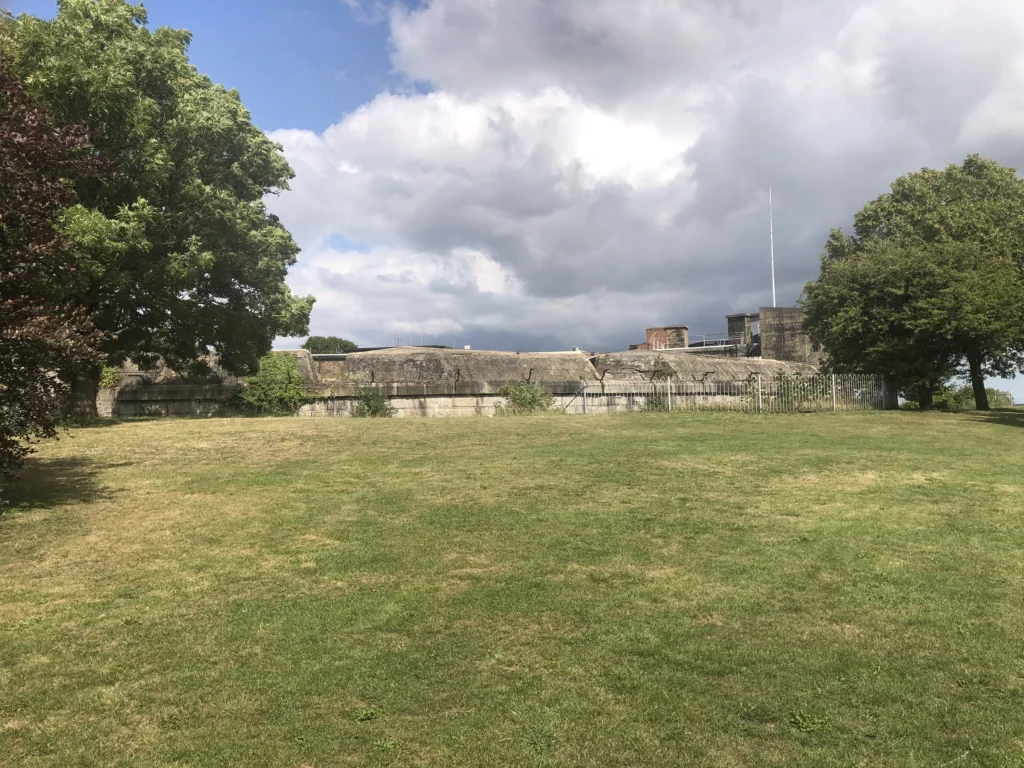About half hour’s drive from me is a place called Coalhouse Fort which was used during both world wars and dates all the way back to Tudor times. It is a pretty unusual place to visit and without an active imagination it might even strike some as being dull. Perhaps that is why the owners operate haunted fort tours.
Coalhouse Fort was even featured on an episode of “Most Haunted”, though the many times I have been there, day and night, I have never found anything remotely eerie or spooky about the place. Previously I had visited Coalhouse with Blair as it has many places to explore, climb and generally cause a nuisance when you’re a teenage boy.
Today I returned a fully realised adult (or as close as I will be to one) and took my four-year-old boy along with me. Showing him all of the concrete outposts that I had spent climbing as a boy. Alongside the pictures I will give you as much information as you need to know about Coalhouse Fort and if you’re thinking of visiting, I would recommend doing it at night as there is a bit more atmosphere – or maybe that is just my imagination.
The good thing is that providing you don’t get locked into the carpark (other parking is available nearby), you can explore the outbuildings and around the fort at night with no issue whatsoever. Apart from maybe encountering “doggers”… if that is still even a thing?
Coalhouse Fort Early History
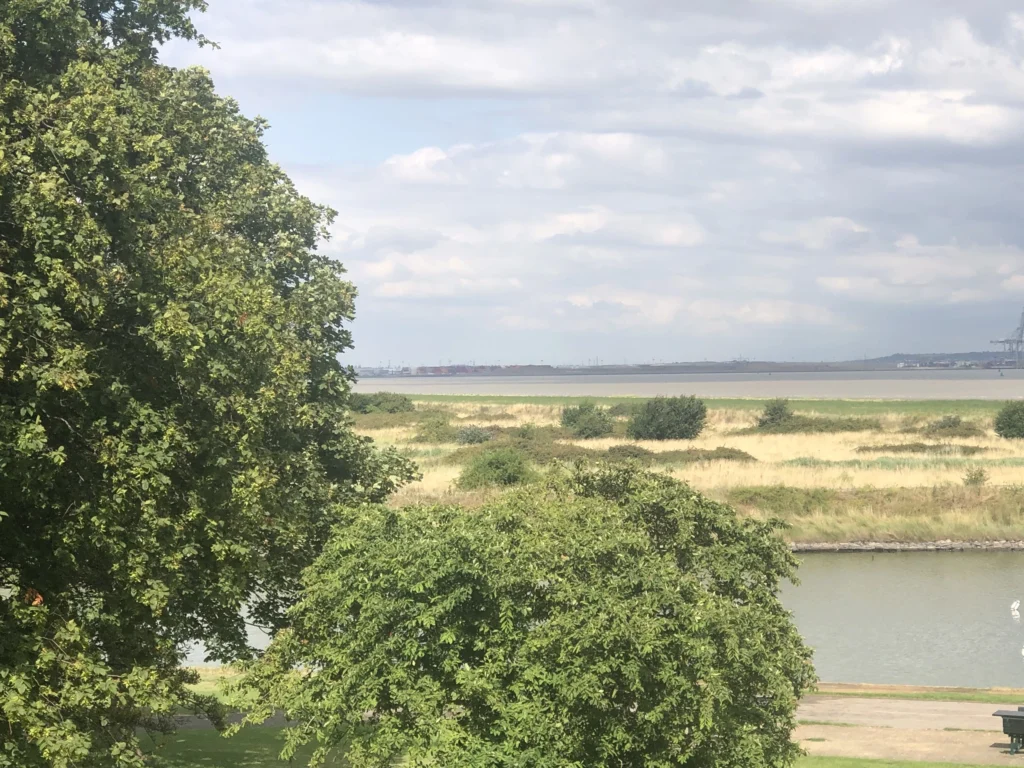
Coalhouse Fort sits on the Thames Estuary and is located in what is known as East Tilbury. The main town of Tilbury being about a mile or so upriver. The first defences were thought to have been built there after the Hundred Years War in response to raiding parties pushing up the Thames toward London and causing damage, unrest and whatever else went alongside medieval pillaging.
It is fair to say that although the people of Essex requested protection, the Crown at the time didn’t wish to spend money fortifying an area with relatively low importance. Essex was a rural and sparsely populated area at this time and any raiding committed by the French was likely more an insult than actual material loss. This meant that the lowly people of East Tilbury got themselves a hill with a ditch to repel any raiders.
Being completely frank, I am not sure East Tilbury even existed in any meaningful way back in 1402, it was probably just a persistent campaigning farmer that was angry that the French kept setting fire to his cows. Regardless, the angry farmer got a hill and a ditch to hide behind when the French came raiding.
Looking around today, there are plenty of places of elevation that could have been the original hill and ditch combo. There is probably a historian that could point it out, but I am not sure which it is or even if that structure still stands.
Tudor Fort
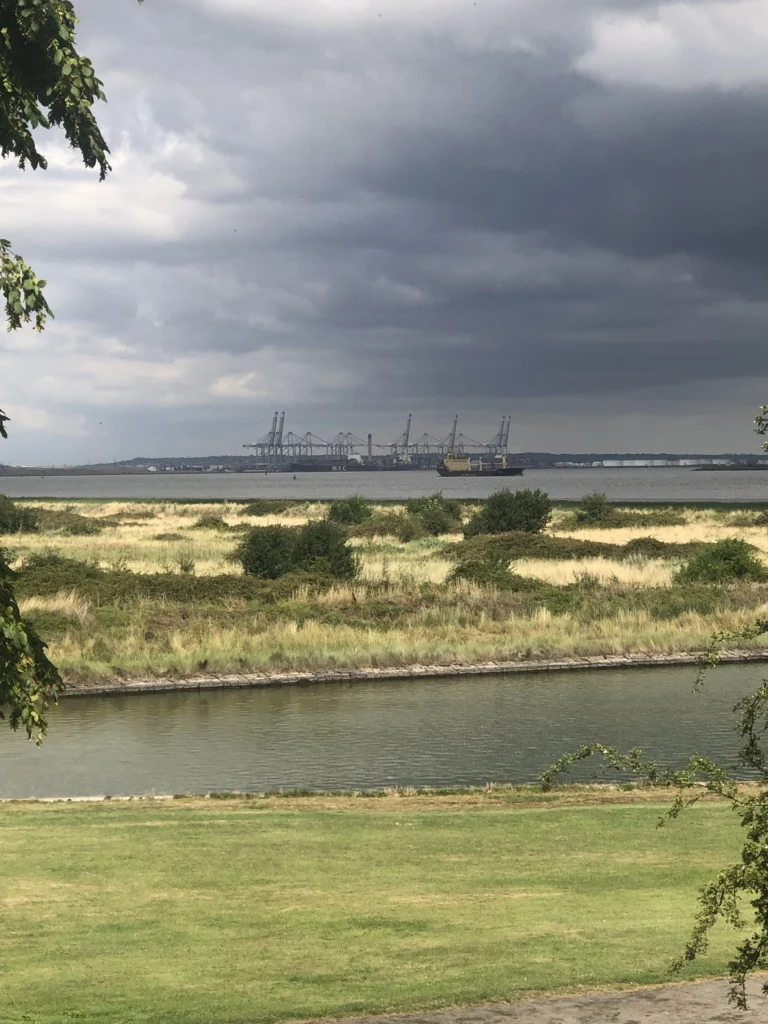
When Henry VII came to power, he was very good at doing a number of things, most of them bad, like heavy taxation. It was through Henry VII though that England entered a period of relative stability and his frugal spending and investment in a fledgling navy and coastal protection proved very effective in restoring some power to England. His son, Henry VIII furthered his father’s ambition and wary of an invasion of Catholic forces after he divorced Catherine of Aragon, he ordered an artillery house to be built in East Tilbury.
Again, it is not really clear what importance Tilbury played from a local perspective but Henry VIII likely saw the Thames Estuary as an important naval route to London that needed fortification and defences. In total five artillery blockhouses were built along the Thames estuary, two on the Essex side and three on the Kent side.
Henry VIII was still reluctant to spend a lot of money building these defences and some of the stone used to build the blockhouse at East Tilbury was taken from a nearby chapel that was dissolved after the abolition of the Catholic Church in England. Although made from recycled materials the artillery blockhouse itself was a formidable fortification and a far-cry from the hill and ditch I mentioned earlier. It housed fifteen cannons that were designed to fend off any foreign forces.
Coalhouse Fort also, for the first time, housed troops with nine soldiers living there and manning the blockhouse.
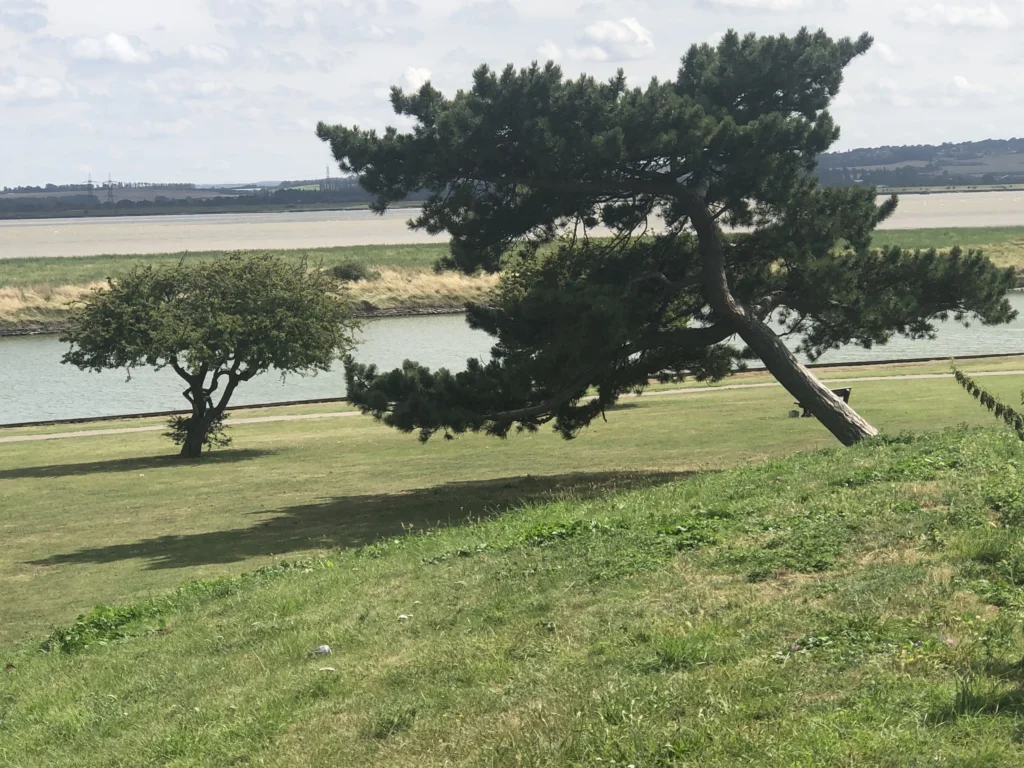
The cannons were of different calibres and were designed to be able to take down a vessel of any size at reasonable range. The job of the soldiers was made easier by additional fire coming from the Kent side and because the Thames isn’t too wide at the Tilbury point. Soldiers would have been able to see fire signals from across the river with ease.
It is unclear whether the cannons at the East Tilbury blockhouse ever fired a shot in anger. The likelihood is that they didn’t and the military post seems to have been abandoned before 1600. Probably after Henry VIII had died.
Nothing remains of the Henry VIII blockhouse; it is thought to be buried under a layer of mud that is now itself under the river Thames. Don’t visit Coalhouse expecting to see Tudor ruins because you will leave disappointed.
Tilbury Fort
The remnants of the Tudor fort at East Tilbury did go through an evolution of sorts after Henry VIII died and part of the defences were incorporated into Tilbury Fort which is upriver of Coalhouse Fort. But the story and exploration of Tilbury Fort is for another day!

Urbexing Around Coalhouse
We parked in the main car park for our adventure around Coalhouse, from there you have a bit of a choice, do you make for the main fort itself or do you veer right and explore other outbuildings? In our case we chose right, because it also has a play park in that direction.
Much of the surrounding area to Coalhouse Fort is open grassland/fields. These are interrupted here and there by trees and wooded outcrops. If you’re looking for a place to walk the dogs and take in some unusual sights then Coalhouse definitely ticks that box.


The play park isn’t very good, it has a set of double swings and a set of double baby swings, a seesaw that doesn’t want to work, a slide and a climbing wall. Depending on how much you like the swings, I don’t think even a child would want to spend more than half hour in the park. Ryan certainly didn’t and was keen to go up towards the river and the unusual outbuildings.
The first set of outbuildings is easy to reach by cleared grassland. If you’re visiting at night be careful as you do bridge a small river to reach the buildings and when you’re there, be careful as there are no guardrails etc. If exploring at night it is best to pack a good torch. I’d recommend this one.
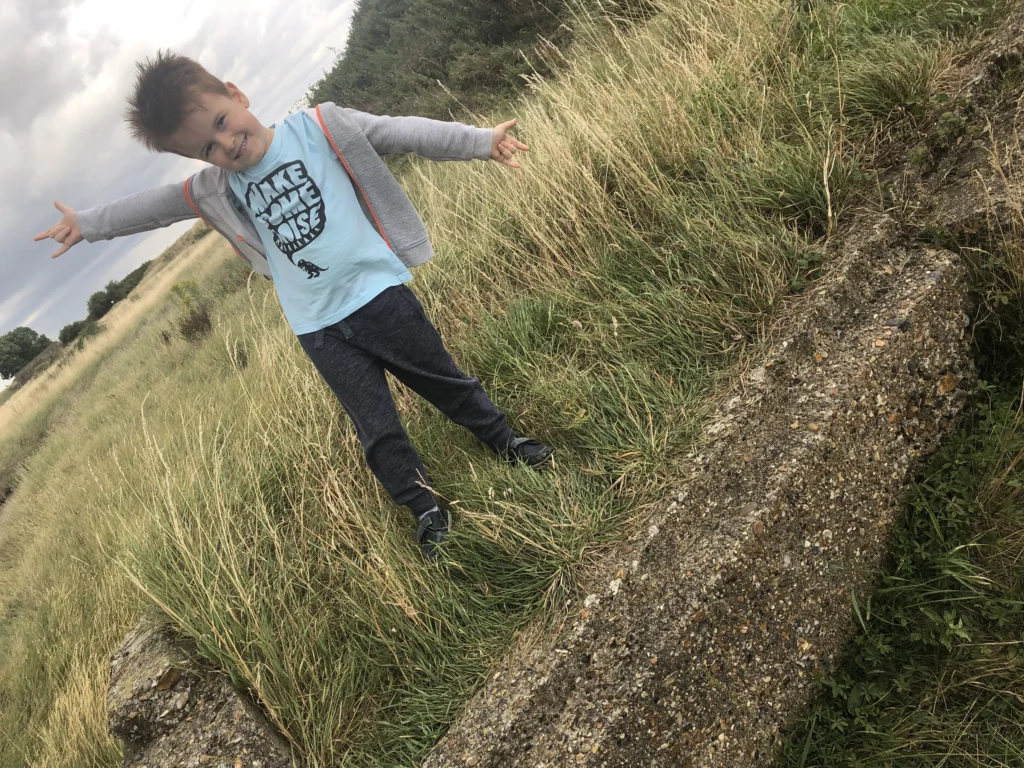
The first outbuildings are now a combination of broken concrete and two complete rooms. It is essentially a concrete shell which has now been decorated by teenagers who have no doubt used the empty rooms as a hideaway. I am not sure what these were used for initially, perhaps they were used as additional storage for munitions of maybe the outbuilding house a gun or sentry.
Climbing up the outbuildings you come out onto a large grass verge that is quite steep. For those that are a bit braver it is possible to climb onto the roof of one of the buildings with relative ease. With a four-year-old in tow, I decided it would be much better to play it safe. We ventured down the verge and up the steep crest the other-side.
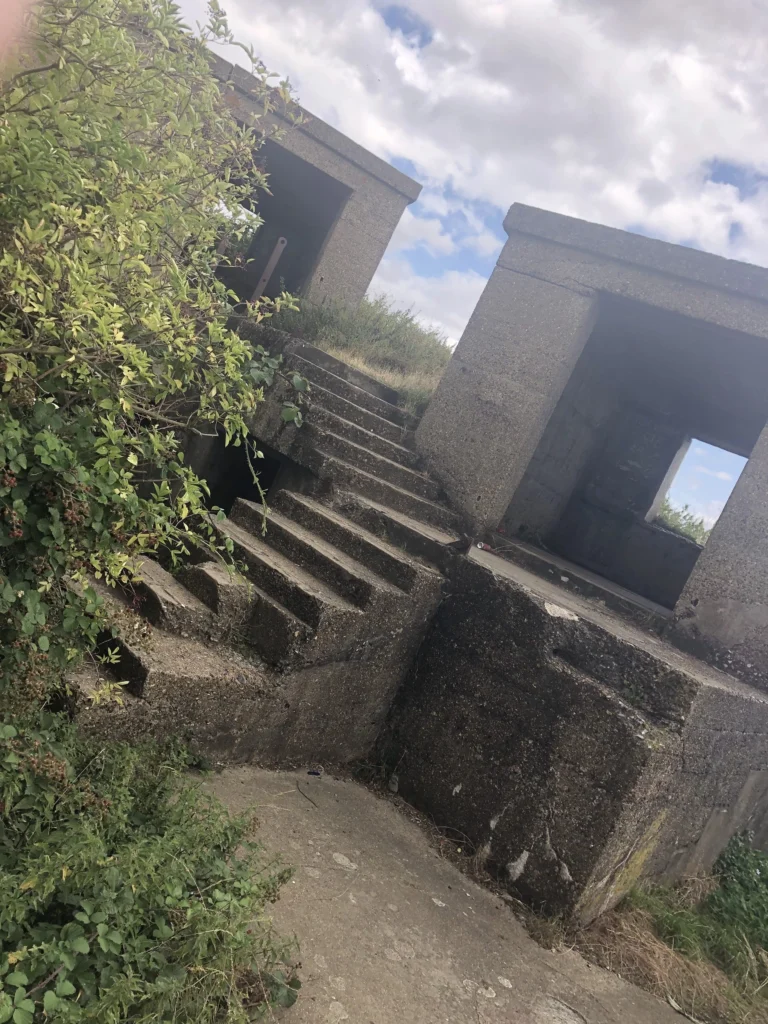

This valley could well have been the medieval hill and ditch I mentioned earlier; it could also be a natural part of the terrain. One thing you will notice when exploring Coalhouse is that it is very difficult to be sure what is artificial and which features naturally occurred.
Once up the bank of the other hill you are coasting along the river. You can turn left and head back toward the definitely man-made lake and Coalhouse Fort or you can venture right. Venturing right you will reach a mini-crossroads which has a bench as a marker for those struggling to find it.
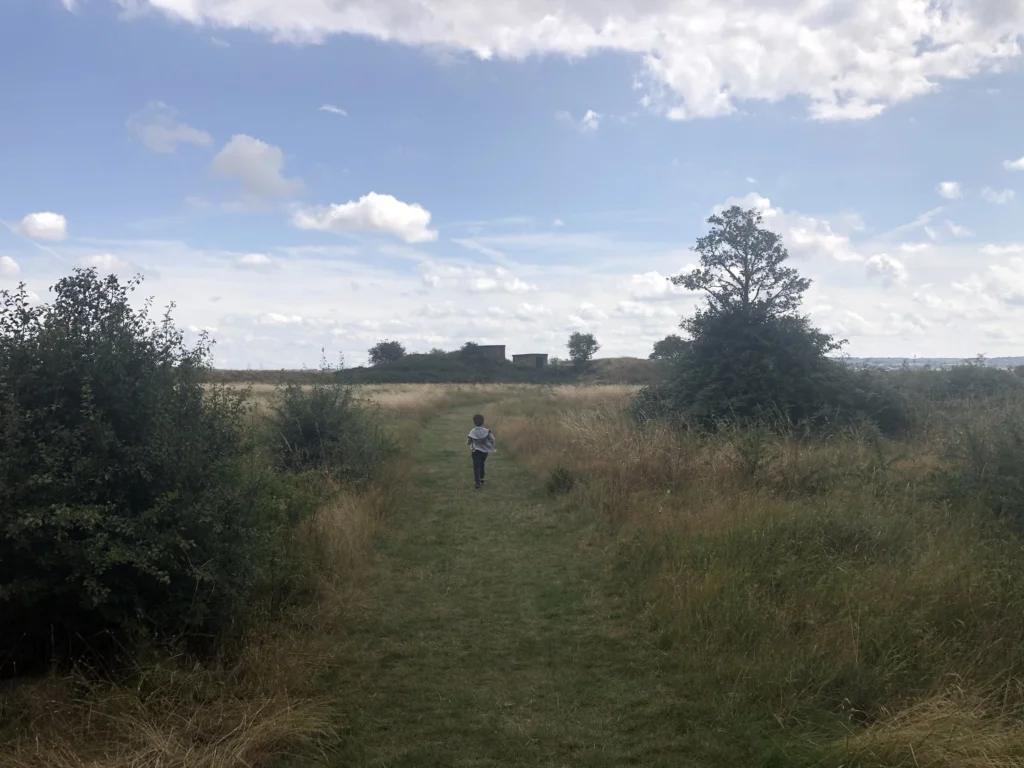
From this cross roads you can head down to what looks like an abandoned water tower. I am not entirely sure what its purpose was, but it is a tall structure much like the ones used to store water. The structure is not easy to reach unless you’re sure footed, as Ryan found out on the way back, managing to slip over and get covered in mud.
The water tower has a shell building which originally had concrete steps up to it. The steps are now broken and reaching the shell takes a bit of effort. In the past me and Blair were able to bunk up and then pull the remaining person up, but we are both reasonably tall. Ryan on the other hand would find it impossible to get in so we left that for a day when he is older.
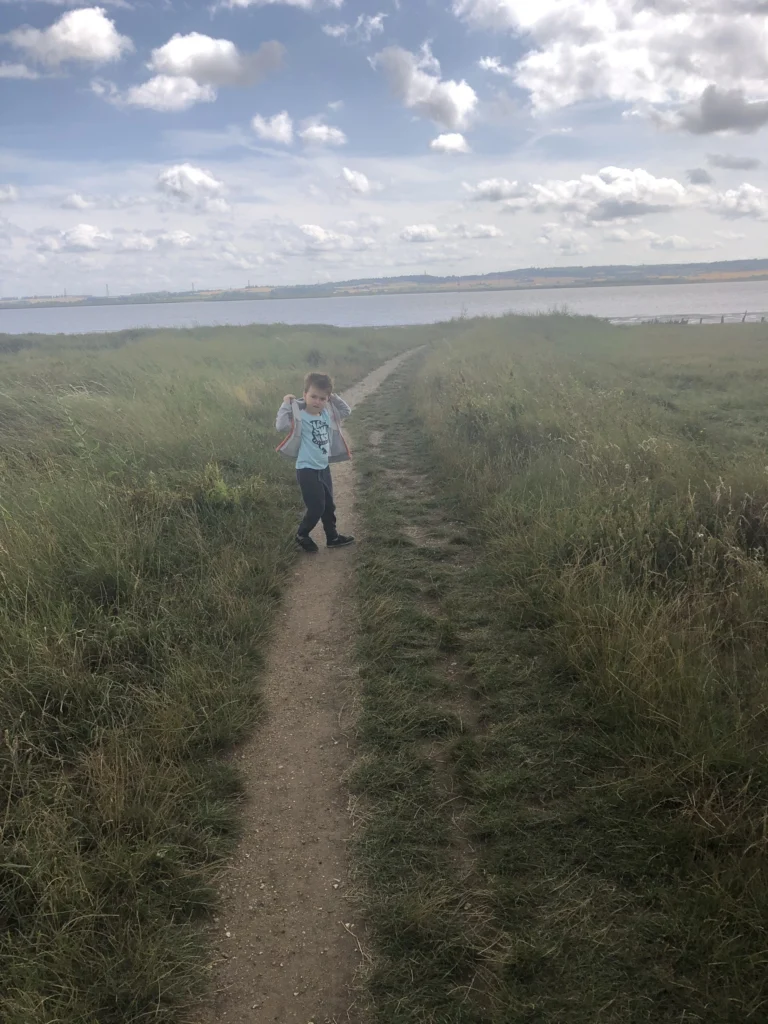
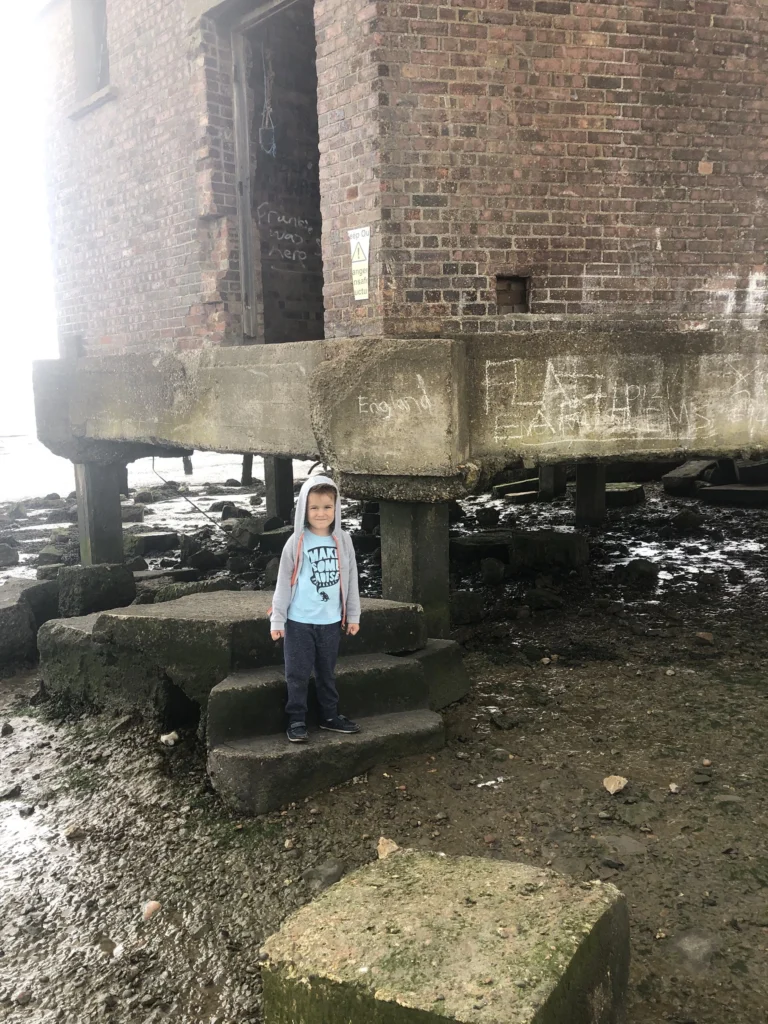
Coalhouse Fort after 1600
For hundreds of years until the outbreak of World War One, Coalhouse Fort has played a supporting and defensive role. The structure as it is today has undergone various changes to help equip it for dealing with the threat of the day.
In 1799 the work began on a new armed battery that would be used to once again deter the pesky French (and Dutch) from sailing up the Thames. The initial installation was named Coalhouse Fort after the nearby East Tilbury coal wharf called Coalhouse Point. Housing four 24-pounder Cannons and heavily fortified (complete with moat), Coalhouse Fort now formed a major part of the Thames defences.
During the 1800’s the industrial revolution was well underway and the British were locked in a technology battle with the French. This resulted in steam-powered ironclad warships being built – which were more agile than their predecessors and faster too. You may remember the names la Gloire and HMS Warrior from Blair’s blog!
With the threat of la Gloire, being ever present, it was quickly realised that the slow firing and mostly immobile cannon installations of Coalhouse Fort were not enough to prevent the French sailing up the Thames and destroying important military installations like the Royal Arsenal at Woolwich (which the football club is named after).
This led to rapid and vast expansion at Coalhouse as well as other fortification points along the Thames. Coalhouse Fort went through many iterations during the 1800s, being built, rebuilt and having more powerful and accurate gun instalments fitted.
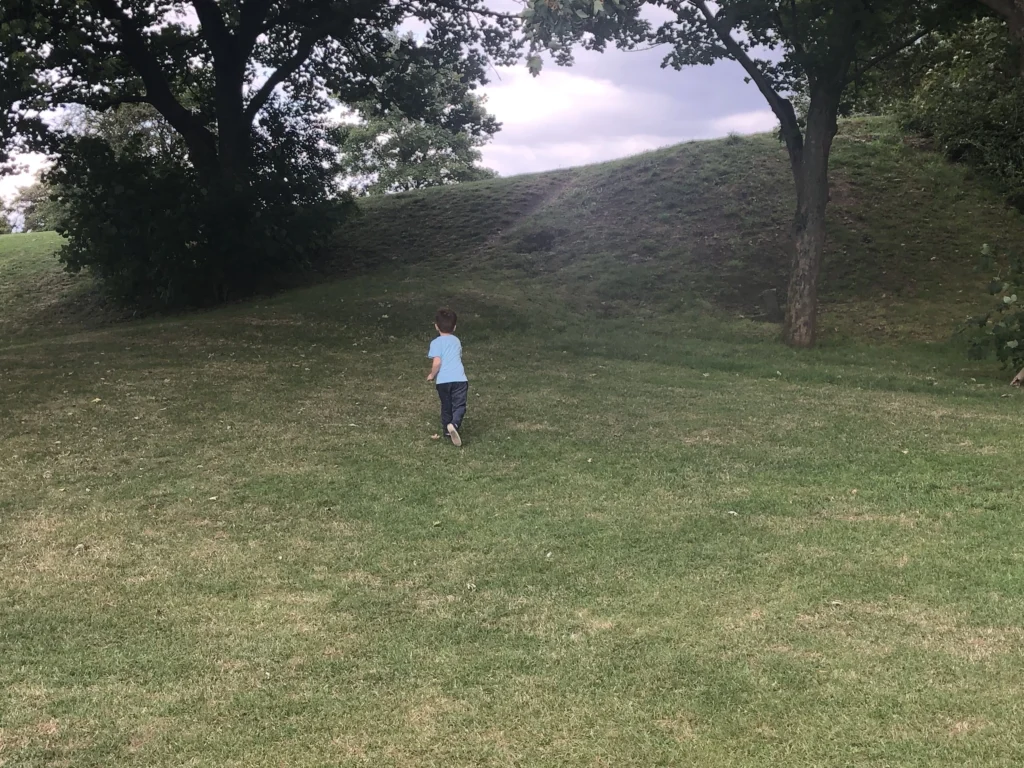
By the close of the 19th Century, Coalhouse Fort was a significant defence area, complete with multiple guns, living quarters and heavy ramparts. Interestingly, Coalhouse Fort alongside the other Thames defence forts was designed in much the same way as a medieval castle would be. Although the technology had moved on considerably, the idea of a fortress that was impenetrable was still the primary consideration in its design. Coalhouse Fort had all the trappings of a medieval castle too, complete with moat, windows to fire cannons from and battlements, it would have looked very castle like in its time – it even had large iron shields.
Exploring Coalhouse Fort
After a brief pit-stop back at the car (to clean Ryan up) and a five-minute rain shower, we head over to the main Fort building itself. Ryan is very excited to get a closer look and is keen for us to go inside. Unfortunately, the Fort wasn’t open because it was undergoing repairs.
You can pretty much climb up the hills and see into the Fort though because the grass banks around it are so high and the Fort sits constructed in hollowed out ground (where the moat would have been). From the pictures me and Ryan took you should be able to clearly see the ditch which served as the moat, the battlements and encased windows as well as some of the stone detail.

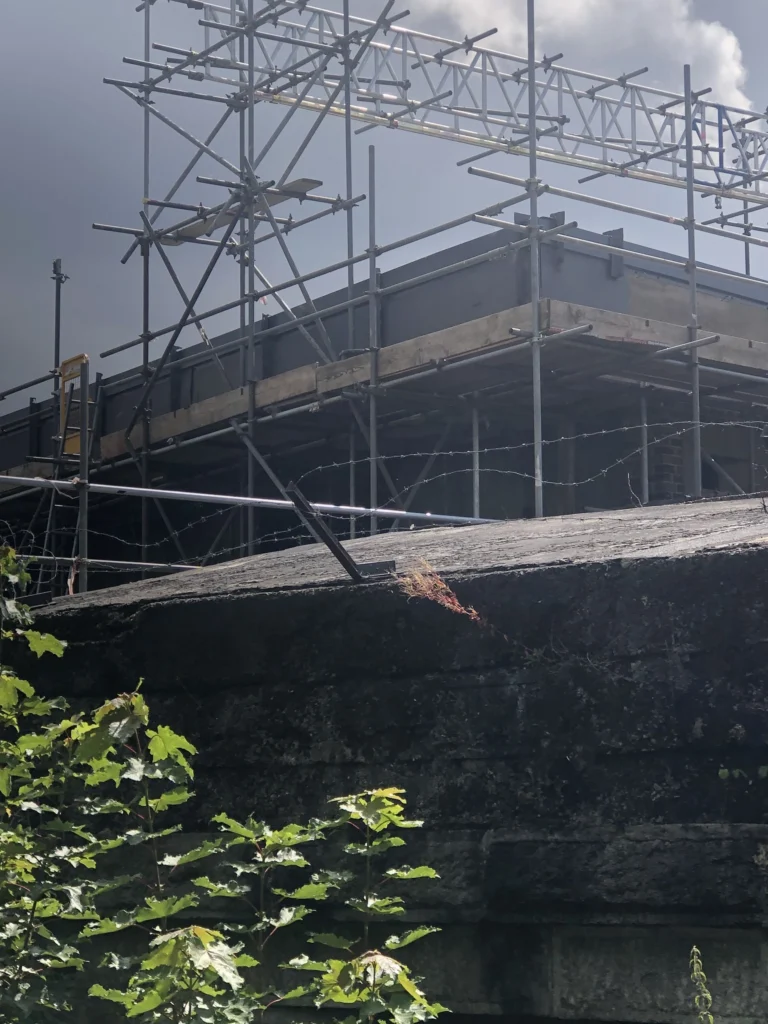
We spent the remaining time running around, looking in nooks and crannies and generally being inquisitive. It was awesome to see Ryan’s imagination going and he was full of questions, trying to reconcile what he was seeing with fictional portrayals of castles and forts.
Humans are not the only ones to excavate at Coalhouse and our exploration made it clear that there were a lot of burrowing animals making dens or warrens. We couldn’t be sure which.
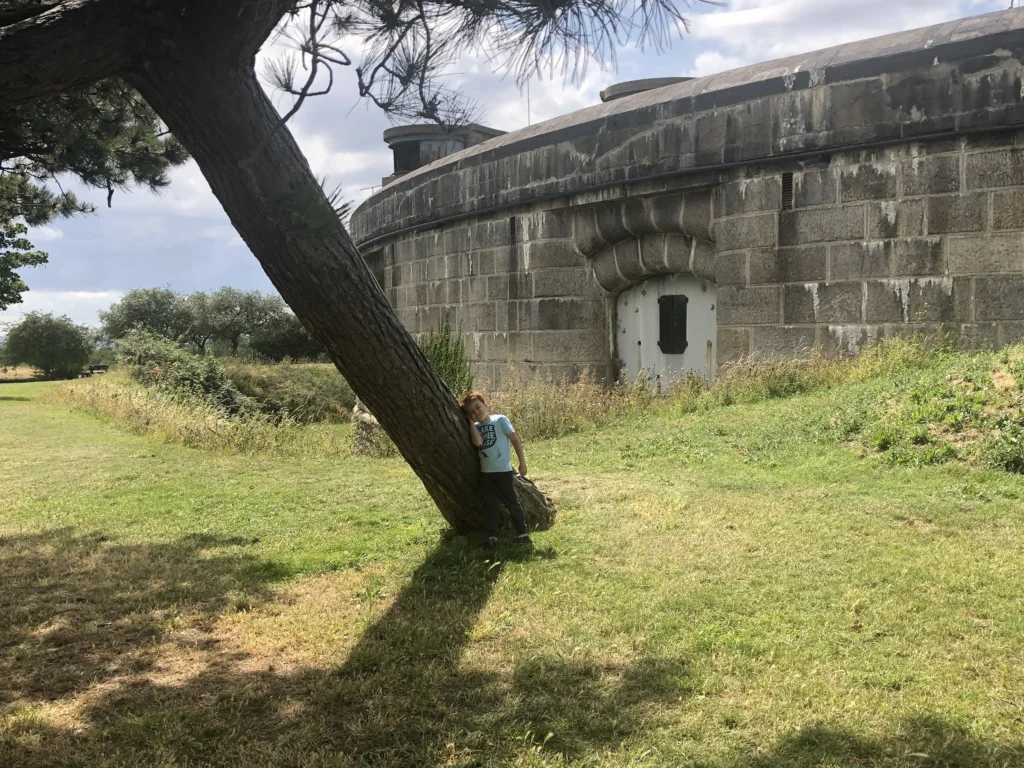
Coalhouse Fort During the World Wars
By the time the 20th Century had started, Coalhouse was all but obsolete already despite being so heavily remodelled in the last hundred years. The Thames was still at risk and now with the invention of faster torpedo boats, Coalhouse needed new armaments. The need for the Fort to serve as a castle-like structure was going as well and the moat was filled in.
This left the battlements which served as a platform for the new guns and the remaining fort-structure to be used as living quarters.
Coalhouse Fort During World War One
During World War One, the best solution for the new technology wasn’t guns – instead the Thames was mined and Coalhouse Fort served as a lookout post. If enemy ships passed, they would remotely detonate the mines and if friendly ships passed, they wouldn’t.
Coalhouse Fort was dwindling in importance and with each year that passed during the first world war, its operations were being relocated or moved to more important strategic points on the Thames. By the end of World War One, Coalhouse Fort was nothing more than a glorified look out point with just a glimmer of hope – enemy zeppelins had given rise to the need for air defences along the Thames and Coalhouse was given its first anti-aircraft gun.
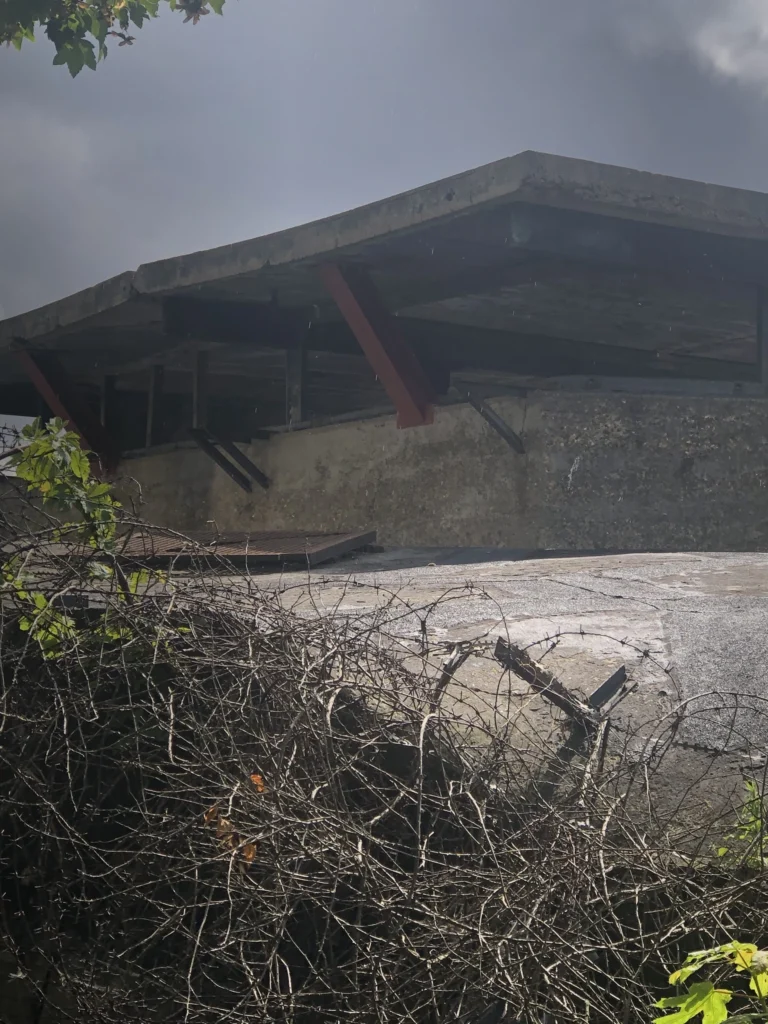
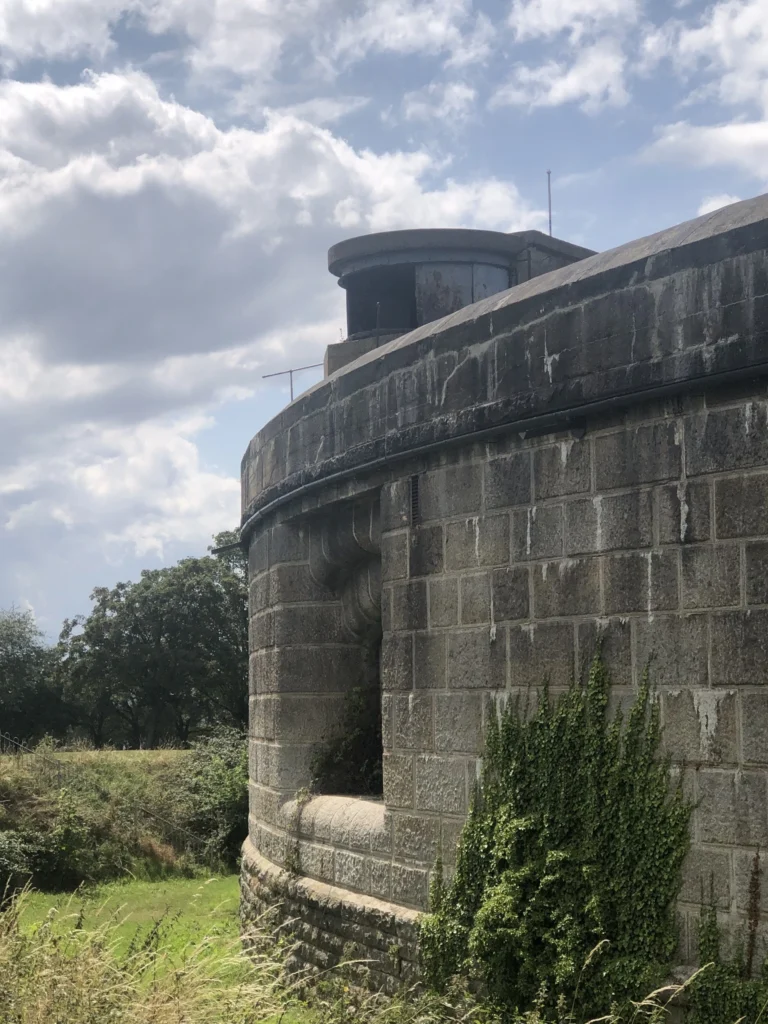
World War Two and Coalhouse Fort
Where World War One was a war of the trenches, World War Two saw more diverse action, more often and once again naval and aerial threats were very real. Coalhouse Fort had an opportunity to shine, although it was short-lived.
Serving mainly as an anti-aircraft installation, Coalhouse Fort would have probably seen more “action stations” calls than it had ever done before. With every air-raid siren wail, the personnel of Coalhouse would have mustered to position. Scouring the dark night sky for enemy planes.
How effective it was as an anti-aircraft defence is unknown, but it likely managed to fire a few shots in anger during World War Two, something that it is possible it hadn’t done until that point. The fort was also a forward position that would be used to repel an invasion, but, as the war drew on and neared its end, the likelihood of a land invasion died away.
So did Coalhouse Fort, which was transferred to be controlled by the Women’s Royal Navy Service until they too left it unmanned.
Coalhouse Fort Today
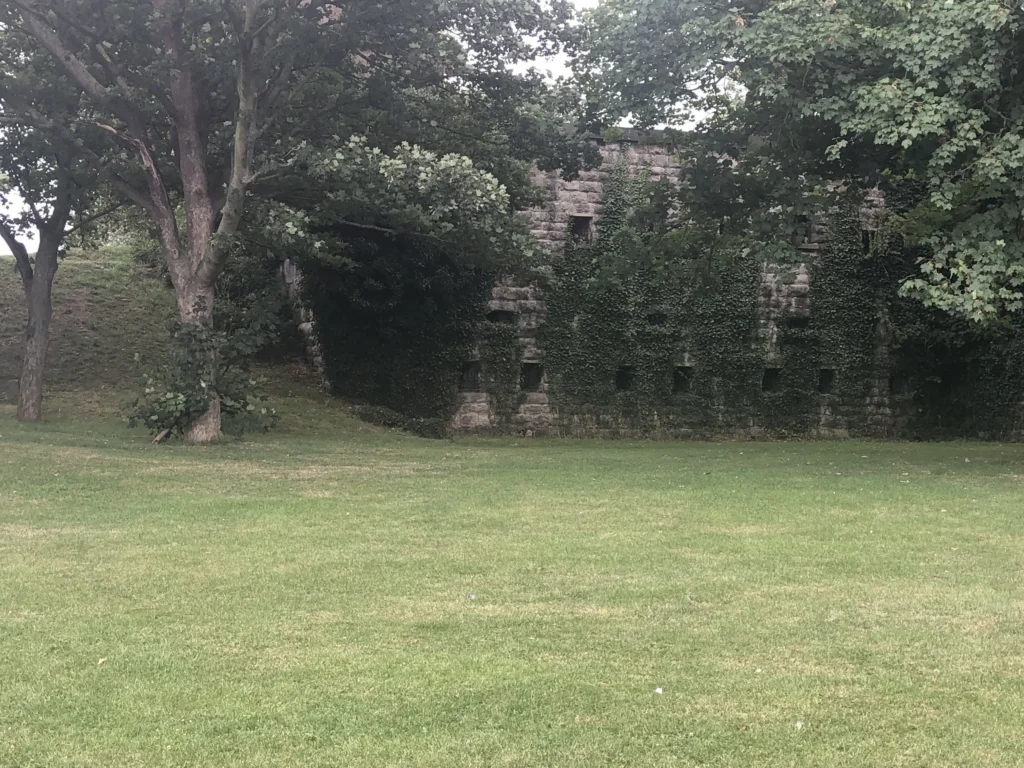
East Tilbury and Linford have suffered a bit in the last fifty years and both are a little run down with Linford being the fairer of the two. This has also been the case of Coalhouse Fort which has fallen close to ruin. The outbuildings are certainly ruined and given the scaffolding and repair work it is likely the actual Fort needs a lot of work to keep it as it was.
This task is being funded by national lottery projects and a bit of a fun fact; it was part financed by Warner Bros Studios who filmed the opening of Batman Begins (it was used as a prison in the film) at Coalhouse Fort.
Personally, I don’t see the need to preserve Coalhouse Fort, it didn’t play any vital historical role and it doesn’t really have much historic significance (there are many fort structures along the Thames). But if they want to chuck money preserving it then so be it.
For exploring and looking around some abandoned buildings, Coalhouse is pretty cool and it has enough of a story behind it to make it interesting. Be prepared as even with funding it is pretty run down, though, as you can see from my pictures, the surrounding Thames scenery is more than enough to keep your eyes entertained while you stroll around and enjoy the place.
That’s it for this blogpost! If you have any suggestions about places we should visit let us know in the comments below, I will round off this post by adding a trip to Tilbury Fort.
